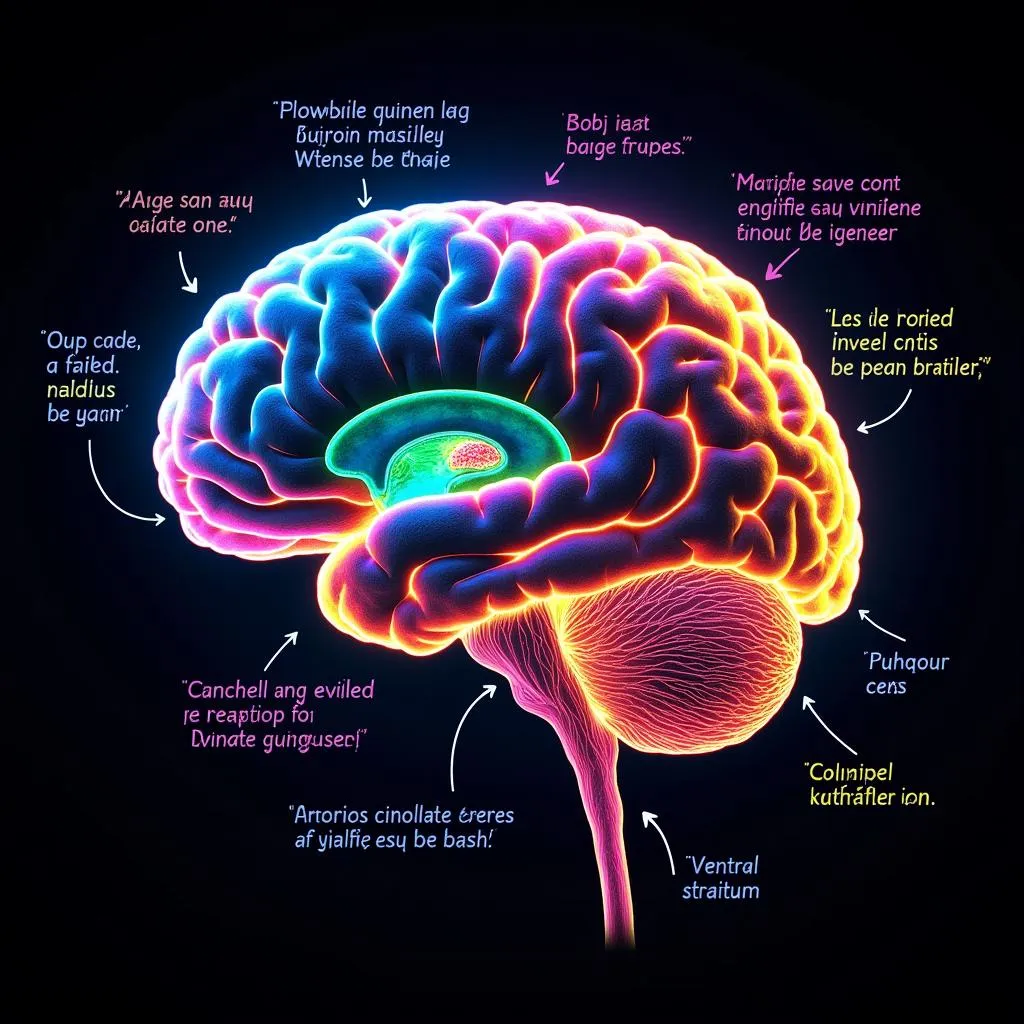The role of poetry in promoting emotional health is a fascinating topic that combines literature, psychology, and personal well-being. As an experienced IELTS instructor, I’ve crafted a comprehensive Reading practice test to help you explore this subject while honing your exam skills. Let’s dive into the passages and questions that will challenge your comprehension and analytical abilities.
Nội dung bài viết
- Passage 1 – Easy Text
- The Healing Verses: Poetry’s Impact on Mental Health
- Questions 1-7
- Questions 8-10
- Passage 2 – Medium Text
- The Neuroscience of Poetry: Verses that Rewire the Brain
- Questions 11-15
- Questions 16-20
- Passage 3 – Hard Text
- The Evolutionary Psychopoetics: Poetry as an Adaptive Mechanism for Emotional Regulation
- Questions 21-26
- Questions 27-30
- Answer Key
- Passage 1
- Passage 2
- Passage 3
Passage 1 – Easy Text
The Healing Verses: Poetry’s Impact on Mental Health
Poetry has long been recognized as a powerful medium for self-expression and emotional catharsis. In recent years, mental health professionals have begun to explore the therapeutic potential of poetry in promoting emotional well-being. This practice, often referred to as “poetry therapy,” has gained traction in clinical settings and community programs alike.
The act of writing poetry allows individuals to articulate complex emotions and experiences that may be difficult to express through conventional means. By putting pen to paper, people can externalize their inner turmoil, gaining a sense of control over their feelings. Moreover, the process of crafting a poem requires introspection and self-reflection, which can lead to increased self-awareness and personal growth.
Reading poetry, on the other hand, offers a unique form of emotional resonance. When readers encounter verses that mirror their own experiences, they often feel a profound sense of connection and validation. This can be particularly beneficial for those struggling with feelings of isolation or alienation. Poetry’s ability to distill universal human experiences into concise, evocative language makes it an effective tool for fostering empathy and understanding.
 Poetry therapy session in progress
Poetry therapy session in progress
Research has shown that engaging with poetry can have measurable effects on emotional and psychological well-being. Studies have demonstrated reduced symptoms of depression and anxiety among participants in poetry therapy programs. Additionally, poetry interventions have been associated with improved mood, increased self-esteem, and enhanced coping skills.
The flexibility of poetry as a therapeutic tool is one of its greatest strengths. It can be adapted to suit various ages, cultural backgrounds, and psychological needs. From structured workshops to informal writing circles, poetry offers a versatile approach to emotional healing that can complement traditional therapeutic methods.
As the field of poetry therapy continues to evolve, it is likely that we will see further integration of poetic practices into mental health care. The power of metaphor, rhythm, and imagery to access and process emotions suggests that poetry may play an increasingly significant role in promoting emotional health in the years to come.
How traditional cooking lessons support cultural learning can be seen as a parallel to how poetry supports emotional learning. Both practices offer hands-on experiences that connect individuals to deeper aspects of human experience.
Questions 1-7
Do the following statements agree with the information given in the passage?
Write:
TRUE if the statement agrees with the information
FALSE if the statement contradicts the information
NOT GIVEN if there is no information on this
- Poetry therapy is a new concept that has only recently been introduced in clinical settings.
- Writing poetry helps individuals gain control over their emotions.
- Reading poetry is more beneficial than writing poetry for emotional well-being.
- Poetry therapy has been proven to reduce symptoms of depression and anxiety.
- Poetry interventions are only effective for adults.
- Traditional therapeutic methods are being replaced by poetry therapy.
- The use of metaphor in poetry is particularly effective in processing emotions.
Questions 8-10
Complete the sentences below.
Choose NO MORE THAN TWO WORDS from the passage for each answer.
- The process of writing poetry encourages ___ and self-reflection.
- Poetry can help those feeling ___ or alienation by providing a sense of connection.
- The ___ of poetry as a therapeutic tool allows it to be used with various groups and needs.
Passage 2 – Medium Text
The Neuroscience of Poetry: Verses that Rewire the Brain
The intersection of neuroscience and literature has revealed intriguing insights into how poetry affects the human brain. Recent studies utilizing advanced neuroimaging techniques have shed light on the neural mechanisms at play when individuals engage with poetic works. This research not only validates the emotional impact of poetry but also suggests its potential for cognitive enhancement and neuroplasticity.
When the brain processes poetry, it activates multiple regions simultaneously, creating a symphony of neural activity. The left hemisphere, typically associated with language processing, works in concert with the right hemisphere, which is linked to creativity and emotional processing. This bilateral activation is particularly pronounced when individuals encounter metaphorical language, a hallmark of many poetic works.
Functional magnetic resonance imaging (fMRI) studies have shown that reading poetry activates the posterior cingulate cortex, a region involved in autobiographical memory and self-reflection. This activation may explain why poetry often evokes personal memories and emotions, allowing readers to connect deeply with the text. Additionally, areas associated with reward and pleasure, such as the ventral striatum, show increased activity when participants read poetry they find particularly moving or beautiful.
 Brain activity while reading poetry
Brain activity while reading poetry
The rhythmic and musical qualities of poetry also engage the brain’s auditory cortex, even when the poem is read silently. This phenomenon, known as subvocalization, may contribute to the soothing effect that poetry can have on the mind. Moreover, the regular patterns found in metered verse have been shown to synchronize brain waves, potentially explaining the calming influence of rhythmic poetry.
Engaging with poetry over time may lead to structural changes in the brain. Longitudinal studies of individuals who regularly read or write poetry have observed increased gray matter density in regions associated with language processing and emotional regulation. This neuroplasticity suggests that poetry could serve as a cognitive exercise, strengthening neural pathways and potentially offering protective effects against age-related cognitive decline.
The cognitive demands of interpreting poetry, particularly works with complex imagery or abstract themes, activate the brain’s executive function networks. This includes the dorsolateral prefrontal cortex, which is crucial for working memory and cognitive flexibility. As such, the mental effort required to unpack poetic meaning may enhance overall cognitive performance and adaptability.
Interestingly, the brain’s response to poetry appears to be culturally influenced. While certain neural patterns are consistent across cultures, studies have shown variations in brain activation based on an individual’s cultural background and poetic traditions. This highlights the importance of considering cultural context when exploring the neurological impacts of poetry.
The neuroscientific exploration of poetry’s effects on the brain is still in its early stages, but the findings thus far are promising. They suggest that poetry is not merely a form of artistic expression but a powerful tool for cognitive stimulation and emotional regulation. As research in this field progresses, we may uncover new ways to harness the neurological benefits of poetry for therapeutic and educational purposes.
Understanding the neural basis of poetry’s impact may lead to more targeted interventions for emotional health. By identifying which poetic elements elicit specific brain responses, clinicians and educators could tailor poetry-based activities to address particular cognitive or emotional needs. This personalized approach could revolutionize how we use literature to support mental well-being and brain health across the lifespan.
Questions 11-15
Choose the correct letter, A, B, C, or D.
-
According to the passage, when processing poetry, the brain shows:
A) Activation primarily in the left hemisphere
B) Activation primarily in the right hemisphere
C) Bilateral activation
D) Minimal neural activity -
The posterior cingulate cortex is associated with:
A) Language processing
B) Reward and pleasure
C) Autobiographical memory
D) Auditory processing -
The phenomenon of subvocalization refers to:
A) Reading poetry aloud
B) The brain’s auditory cortex activating when reading silently
C) The calming effect of poetry
D) The synchronization of brain waves -
Regular engagement with poetry may lead to:
A) Decreased gray matter density
B) Increased gray matter density
C) No change in brain structure
D) Damage to language processing regions -
The dorsolateral prefrontal cortex is important for:
A) Emotional regulation
B) Visual processing
C) Executive function
D) Auditory processing
Questions 16-20
Complete the summary below.
Choose NO MORE THAN TWO WORDS from the passage for each answer.
Neuroscientific research has revealed that poetry engages multiple brain regions, including areas responsible for 16 and emotional processing. The 17 shows increased activity when reading personally moving poetry. The rhythmic qualities of poetry can synchronize 18, contributing to its calming effect. Long-term engagement with poetry may result in 19, particularly in areas related to language and emotion. The brain’s response to poetry is influenced by an individual’s 20___, indicating the need for cultural consideration in research.
Passage 3 – Hard Text
The Evolutionary Psychopoetics: Poetry as an Adaptive Mechanism for Emotional Regulation
The study of poetry through the lens of evolutionary psychology offers a compelling perspective on its role in human emotional health. This interdisciplinary approach, sometimes referred to as “evolutionary psychopoetics,” posits that the creation and appreciation of poetry may have conferred adaptive advantages to our ancestors, contributing to the development and maintenance of emotional well-being within human societies.
From an evolutionary standpoint, the ability to regulate emotions effectively would have been crucial for survival and reproductive success. Individuals capable of managing their emotional states would have been better equipped to navigate complex social interactions, form alliances, and respond appropriately to environmental challenges. Poetry, with its unique combination of linguistic, cognitive, and emotional elements, may have emerged as a sophisticated tool for emotional modulation and social bonding.
The mnemonic properties of poetry, characterized by rhyme, meter, and alliteration, likely served an important function in preliterate societies. These features not only made information easier to remember and transmit but also facilitated the sharing of emotional experiences across generations. By encoding emotional wisdom in memorable verses, communities could preserve and disseminate strategies for coping with life’s challenges, thereby enhancing collective emotional resilience.
Moreover, the metaphorical nature of much poetry may have developed as a cognitive adaptation for processing and communicating abstract emotional concepts. Metaphors allow for the expression of complex or ambiguous feelings through concrete, sensory-based language. This capacity to “make the abstract tangible” could have significantly enhanced emotional intelligence and empathy within social groups, fostering stronger interpersonal bonds and more cohesive societies.
 Ancient storyteller reciting poetry
Ancient storyteller reciting poetry
The cathartic function of poetry, recognized since ancient times, aligns well with evolutionary theories of emotion. The process of creating or engaging with poetry that reflects one’s emotional state may serve as a form of cognitive reappraisal, allowing individuals to process and regulate their emotions more effectively. This emotional release through artistic expression could have provided a non-violent outlet for psychological tension, contributing to social harmony and individual well-being.
Furthermore, the rhythmic elements of poetry may have co-evolved with human musicality, tapping into neural circuits that modulate arousal and attention. The synchronization of vocal patterns and bodily movements during the recitation of poetry could have facilitated social coordination and collective emotional experiences, reminiscent of the bonding effects observed in group singing or dancing.
The universal presence of poetic forms across cultures suggests that poetry may fulfill a fundamental human need for emotional expression and connection. Cross-cultural studies have identified common themes in poetry worldwide, such as love, loss, and the natural world, indicating that certain emotional experiences are deeply rooted in our evolutionary heritage. The persistence of these themes over millennia and across diverse societies underscores the adaptive value of poetic expression in addressing universal human emotions.
Interestingly, the cognitive complexity involved in creating and interpreting poetry may have contributed to the development of theory of mind – the ability to attribute mental states to others. The imaginative leap required to understand a poet’s perspective or to craft verses that resonate with an audience could have honed social-cognitive skills essential for navigating increasingly complex human societies.
Recent neuroimaging studies lend support to the evolutionary perspective on poetry. The activation of neural networks associated with reward, emotion, and memory during poetic engagement suggests that poetry interacts with evolutionarily conserved brain systems. This interaction may explain the profound emotional impact that poetry can have, as well as its potential therapeutic applications in modern clinical settings.
The evolutionary approach to understanding poetry’s role in emotional health opens up new avenues for research and application. By recognizing poetry as an adaptive mechanism for emotional regulation, we can develop more targeted interventions that leverage our innate responsiveness to poetic forms. This could lead to innovative therapies that combine the emotional power of poetry with evidence-based psychological techniques, potentially offering more effective treatments for emotional disorders.
Moreover, viewing poetry through an evolutionary lens may inform educational practices. Incorporating poetry more systematically into curricula could enhance emotional literacy and social-emotional learning, preparing individuals to better manage the complex emotional landscape of modern life. By tapping into our evolved capacity for poetic expression and appreciation, we may unlock new pathways for promoting emotional health and resilience in contemporary society.
Understanding the deep evolutionary roots of poetry’s impact on emotional well-being can help us appreciate its enduring relevance. As we continue to face the emotional challenges of the modern world, the ancient art of poetry may prove to be a timeless tool for nurturing our psychological health, connecting us not only to each other but also to our shared human heritage.
Questions 21-26
Choose the correct letter, A, B, C, or D.
-
According to the passage, evolutionary psychopoetics suggests that poetry:
A) Is a recent human invention
B) May have provided adaptive advantages
C) Is detrimental to emotional regulation
D) Only developed in literate societies -
The mnemonic properties of poetry were particularly important for:
A) Modern educational systems
B) Individual memory improvement
C) Preliterate societies
D) Written record-keeping -
Metaphors in poetry are believed to have developed as:
A) A purely artistic device
B) A way to confuse listeners
C) A cognitive adaptation for processing emotions
D) A method of secret communication -
The cathartic function of poetry is described as:
A) A form of physical exercise
B) A way to induce sleep
C) A method of cognitive reappraisal
D) A technique for memorization -
The universal themes in poetry across cultures suggest:
A) All cultures have the same emotional experiences
B) Poetry addresses emotions rooted in evolutionary heritage
C) There is no cultural variation in poetic expression
D) Modern poetry is superior to ancient forms -
The development of theory of mind may have been influenced by:
A) The physical act of writing poetry
B) The cognitive complexity of creating and interpreting poetry
C) The use of rhyme and meter
D) The emotional content of poetry alone
Questions 27-30
Complete the summary below.
Choose NO MORE THAN THREE WORDS from the passage for each answer.
Evolutionary psychopoetics examines poetry as an adaptive mechanism for 27. The mnemonic features of poetry, such as rhyme and meter, aided in the 28 of emotional wisdom across generations. Metaphorical language in poetry may have enhanced 29 within social groups. The rhythmic elements of poetry might have evolved alongside human musicality, contributing to social bonding. The universal presence of poetry suggests it fulfills a 30 for emotional expression and connection.
Answer Key
Passage 1
- FALSE
- TRUE
- NOT GIVEN
- TRUE
- FALSE
- FALSE
- TRUE
- introspection
- isolation
- flexibility
Passage 2
- C
- C
- B
- B
- C
- language
- ventral striatum
- brain waves
- neuroplasticity
- cultural background
Passage 3
- B
- C
- C
- C
- B
- B
- emotional regulation
- transmission (or sharing)
- emotional intelligence
- fundamental human need
This comprehensive IELTS Reading practice test on “The role of poetry in promoting emotional health” covers various aspects of the topic, from therapeutic applications to neuroscientific insights and evolutionary perspectives. By engaging with these passages and questions, you’ll not only enhance your reading comprehension skills but also gain valuable knowledge about the intersection of poetry and emotional well-being. Remember to apply your IELTS strategies, such as skimming and scanning, to tackle the questions effectively. Good luck with your IELTS preparation!


